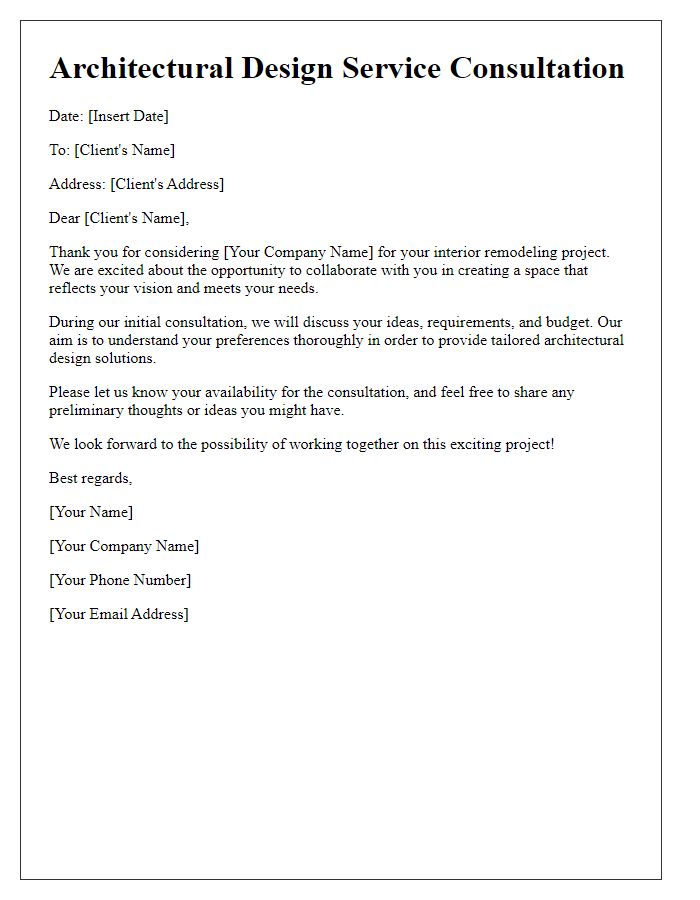Are you dreaming of a stunning architectural design that perfectly reflects your vision? Whether you're planning a cozy family home or a dynamic commercial space, finding the right architectural service can make all the difference. In this article, we'll explore the key elements to consider when inquiring about architectural design services. Keep reading to discover tips and insights that will set you on the path to creating your dream space!

Clear Identification of Purpose
Architectural design services are critical for any construction project, ensuring aesthetic appeal and functional usability. A well-defined inquiry can clarify specific requirements, including residential buildings, commercial spaces, and public structures, contributing to improved communication. Key considerations include identifying the project scale (e.g., single-family homes, multi-story offices), desired architectural style (e.g., contemporary, traditional), and any regulatory guidelines (zoning laws or building codes). Additionally, timelines and budget constraints are essential factors that influence design decisions and contractor selection. Understanding these elements fosters collaboration between clients and architects, ultimately leading to successful project outcomes.
Detailed Project Description
In architectural design projects, providing a detailed project description is paramount for understanding client requirements and vision. Characteristics of the site, such as its location (e.g., urban, suburban, or rural) and size (measured in square feet or acres) must be clearly defined. The type of structure, whether residential, commercial, or mixed-use, needs specification alongside any desired architectural styles (e.g., modern, traditional, sustainable). Key project objectives, including functionality (such as number of bedrooms or office spaces), aesthetic preferences (color schemes or materials), and environmental considerations (energy efficiency standards or landscape integration) require articulation. Additionally, budget constraints should be outlined, often ranging significantly (starting from thousands to millions of dollars), alongside timelines for project milestones. Any regulatory requirements tied to local zoning laws or building codes must also be addressed to ensure compliance throughout the design and construction phases.
Budget and Timeline Expectations
Architectural design services are crucial for creating functional and aesthetically pleasing spaces, often requiring precise budgeting and timeline management. A typical residential project may have a budget range of $100,000 to $500,000, depending on factors such as location in urban areas like New York City, material selections, and project scope. The design phase commonly lasts between 3 to 6 months, encompassing initial consultations, conceptual design development, and permit applications. Adhering to a realistic timeline often ensures smoother communication with contractors and local authorities, which is vital for timely project completion. Furthermore, understanding these parameters allows clients to make informed decisions and effectively manage expectations throughout the architectural process.
Contact Information and Preferred Communication
An architectural design service inquiry can begin with the inclusion of essential contact information such as a full name, email address, and phone number. This information facilitates prompt and efficient communication between potential clients and service providers. Preferred communication methods might include email for detailed project discussions or phone calls for immediate responses. Including a brief description of the project, such as residential renovation or commercial space design, helps architects understand client needs and expectations. Noting preferred times for contact ensures that communication occurs when both parties are available, enhancing the overall inquiry experience.
Request for Portfolio and References
Architectural design services play a vital role in shaping functional spaces in both residential and commercial projects. When engaging with an architect or design firm, reviewing their portfolio, which typically includes various completed projects such as modern houses, urban developments, and interior renovations, can provide insights into their design style and capabilities. References from previous clients can also offer valuable feedback regarding the firm's communication, project management, and adherence to deadlines. It is essential to gather information about their experience with local building codes and regulations, particularly in regions like San Francisco or Chicago, where compliance can significantly influence the design outcome. Understanding the architect's design philosophy and approach to sustainability, especially in green building practices, can also enhance the selection process.
Letter Template For Architectural Design Service Inquiry Samples
Letter template of architectural design service request for residential project

Letter template of architectural design service inquiry for commercial development

Letter template of architectural design service proposal for public infrastructure

Letter template of architectural design service consultation for interior remodeling

Letter template of architectural design service inquiry for landscape architecture

Letter template of architectural design service request for sustainable architecture

Letter template of architectural design service inquiry for historical restoration

Letter template of architectural design service proposal for urban planning

Letter template of architectural design service inquiry for a mixed-use development





Comments